| By: Paul S. Cilwa | Viewed: 4/19/2024 |
Page Views: 5420 | |
| Topics: #History #Humanorigins #ZechariaSitchin | |||
| Have extraterrestrials ever visited earth, and if they did—did they interact with humans? | |||

If Earth is being visited by aliens now, as many insist, then the question arises: Have aliens ever visited Earth in the past? If so, have they left evidence of their presence? If the answer is "yes," then the current visitations become easier to believe; and, if the visits have been made by the same aliens, then perhaps the purpose of the present encounters can be determined.
Back in the '60s, the author Erich von Daniken made headlines with his book, Chariots of the Gods, and its sequels, in which he presented a huge amount of evidence that he claimed proved aliens had visited Earth in the past. This evidence included anachronistic metals, devices, and common myths. Von Daniken's work was marred by two flaws. First, he had a tendency to make up "facts" when he couldn't find the ones he wanted. Second, his evidence really only proved that a superior technology once existed on Earth, not that it was necessarily alien. Many readers, therefore, were left with the conclusion that von Daniken had unintentionally proven the existence of Atlantis!
The fact is, however, that aliens have visited Earth…and have left behind, not a trinket or two, but volumes of written evidence, in the form of clay tablets left behind in the ruins of Sumer, Earth's first historical civilization.
The Earth Chronicles
No one suspected the existence of the Sumerian people and language before the mid-19th century CE. The first major excavations leading to the discovery of Sumer were conducted between 1842-54 at Assyrian sites such as Nineveh, Dur Sharrukin, and Calah by the French archaeologists Paul Émile Botta and Victor Place; the British archaeologists Sir Austen Henry Layard and Sir Henry Creswicke Rawlinson; and the Iraqi archaeologist Hormuzd Rassam. Thousands of tablets and inscriptions dating from the 1st millennium BCE, the vast majority written in Akkadian, were uncovered.
If these tablets and illustrated cylinder seals had been first viewed today, we would immediately recognize in the cuneiform symbols drawings of spacecraft, aircraft, radiation treatments, and astronomical data. However, the best minds of the 1850s could not imagine such things, and certainly not in relation to a long-dead civilization. They did the best they could in translating the ancient texts, but found many concepts that defied their imaginations. When confronted with a text, for example, that stated a person was going to make a something that would raise him or her above everyone and everything else in the world, that something was translated "name." The original word, shem, actually means "spacecraft;" but who in the 19th century could have guessed that?
It wasn't until Zecharia Sitchin came along with a fresh eye that the texts were revealed in their true meaning.
Sitchin's biography, taken from the dust jacket of The Twelfth Planet:
Zecharia Sitchin was raised in Palestine, where he acquired a profound knowledge of modern and ancient Hebrew, other Semitic and European languages, the Old Testament, and the history and archaeology of the Near East. He attended the London School of Economics and Political Science and graduated from the University of London, majoring in economic history. A leading journalist and editor in Israel for many years, he now lives and writes in New York. One of the few scholars able to read and understand Sumerian, Sitchin has based The Earth Chronicles, a series of books dealing with Earth's and man's histories and prehistories, largely on the Sumerian records as well as other ancient texts written down on clay tablets by the ancient civilizations of the Near East. His books have been widely translated, reprinted in paperback editions, and converted to Braille for the blind.
Sitchin's basic premise is that the Sumerians, who claimed to have been created by a race of "gods" from another planet in this Solar System, were correct. This premise is easily tested; if the Sumerians were, indeed, given knowledge by advanced aliens, that knowledge should be more correct than otherwise possible…and, sure enough, their astronomical tables include accurate orbital information for all the planets, including Uranus, Neptune, and even Pluto—the three planets of our Solar System that are not visible to the naked eye. (They were not re-discovered until 1781, 1846, and 1930, respectively.) Even the major moons of Jupiter, re-discovered by Galileo in 1610, were known to the Sumerians!

This proof of their scientific knowledge demands that we take their other stories, if not at face value, at least with an open mind and willing attitude.
According to the Sumerians, the "gods" were beings who looked much like us (we were created "in their image") but came from a world far from the Sun, that they called Nibiru. They made pictures of their gods interacting with humans. The gods were always shown as being much taller than humans, with disproportionately large eyes.
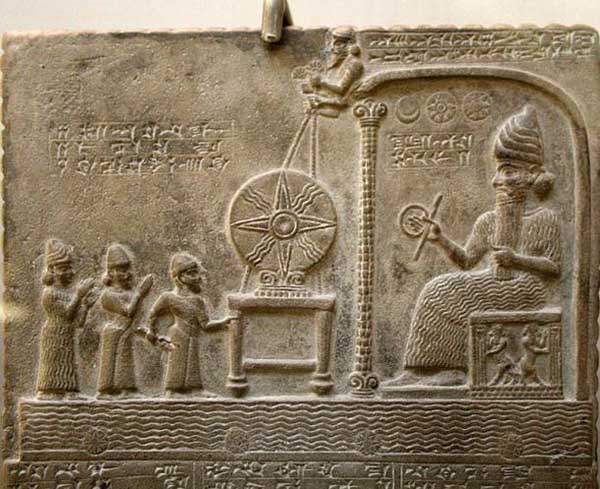
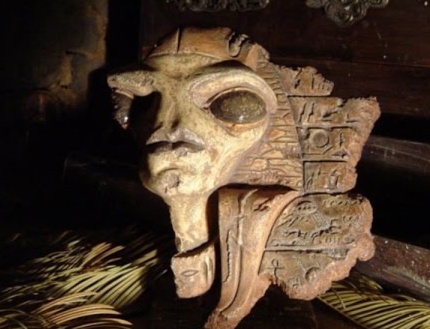
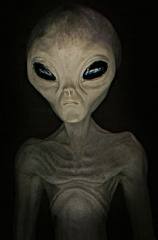
Hmmm…okay, somebody has to say it: The Sumerian image of a Nibiruan isn't all that dissimilar from the modern image of the aliens called "Greys" who are infamous for the abduction of humans?
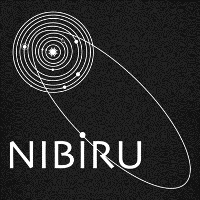
In Sumerian, NI.BI.RU means "planet of the crossing;" they named their world that because, every 3600 years, it crossed from the outer depths of the Solar System into its inner reaches—it had, in other words, an extremely elliptical orbit, like a comet (Something we'd expect from a rogue planet that had been captured by our solar system).
Some 450,000 years ago, according to the Sumerians' timeline, a Nibiruan fled from his home world to Earth. Nibiru was having some sort of environmental crisis at the time, which required gold to rectify. When this Nibiruan, called Alalu, discovered that Earth was rich in the yellow metal, he put aside past differences and contacted his home world. (I suspect his name is the origin of our word "hallelujiah" which came to us from the Hebrew which came from Sumerian.)
Within five thousand years, the Nibiruans (who are extremely long-lived and move with glacial deliberation) were able to mount a massive space program and send 500 astronauts to Earth to extract gold from the waters of what is now the Persian Gulf. These astronauts, the Anunaki (meaning, "Those Who To Earth From Heaven Fell"), are the "giants" of the Old Testament, the "Sons of God" who married the "daughters of men." However, that is getting way ahead of the story; for, according to the Sumerians, mankind had not yet been created.
Anyway, by 416,000 years ago, it became evident to the Nibiruans that extracting gold from seawater was too inefficient a process to save their home world in time, and the order came to mine it instead. (There are, in fact, the remains of extremely ancient gold mines in South Africa, whose age defies analysis. They were clearly artificially dug, but no organic material has been found within for carbon dating purposes.) The Anunaki, hired to be spacemen and lab techs, found themselves pressed into service as miners. The work was hard and intolerable to them; still, in true Nibiruan fashion, they endured it for well over 100,000 years before mutinying.
In response to the mutiny, a Nibiruan named Ninhursag used genetic manipulation to combine the genes of "ape-woman" (presumably H. Erectus) and Nibiruans to produce Man (Cro-Magnon, or anatomically modern, humans). This happened, according to the Sumerians, about 300,000 years ago somewhere near Africa's Rift Valley. Until recently, this date would have sounded much too soon for the appearance of modern humans; but recent finds of extremely old anatomically-modern human have made it plausible.
At first, the genetically altered humans were sterile and had to be artificially carried to term by Nibiruan "birth goddesses," chosen from among the Anunaki, who apparently found that type of labor to be preferable to working in the mines. Obviously, though, this means of producing workers was inherently inefficient. Enki, the Nibiruan whose idea all this was, broke ranks and secretly manipulated the workers additionally, making it possible for them to procreate.

An amazing aspect of this story is that the first workers were given the task of tending a garden. Where was it? The Sumerian name was…E.DIN! What's more, the "Tree of Knowledge" takes on special significance when we remember that "knowing" is a Biblical euphemism for having sex…and when we find out that Enki's "trademark" or symbol was…the serpent!
By 100,000 years ago, mankind's place in this colony world of Nibiru seemed secure. Many of the Anunaki—called nefilim in Hebrew, and translated "giants" in the King James Version of The Bible—took for themselves wives and husbands from among the humans; the job of genetic manipulation had been so thorough that the mixed couples could even bear children. This practice was looked upon by the Nibiruan leaders with alarm, however. Some also doubted the use of another species for service was good for the Nibiruans' own welfare. Some Nibiruans began to wonder if it might ever be possible to close this particular can of worms.
The Flood

By 75,000 years ago, the most recent ice age gripped Earth. It was fourth in a series (they started when the continents drifted to near their current configuration), but the first in the Nibiruans' experience. Sea levels fell; once-lush areas became deserts; temperatures dropped. The glaciers of the world grew, and grew, and grew. By about 13,000 years ago, the seas had fallen to 200 feet below their present level, and the glaciers covering Antarctica had reached critical mass. Almost any celestial jiggling could send them plunging into the oceans; and one was on its way. Nibiru, near the far end of its eccentric orbit, had on a previous pass had shaken loose a comet from the Oort Cloud. That comet had fallen into the inner Solar System, and was about to hit Earth on its 3600-year orbit.
It was not hard for Nibiruan scientists to calculate that the collapsing ice shelves of Antarctica would produce a world-wide tidal wave, or even when; the Nibiruans were hastily called into orbit, forced to leave their human husbands and wives, even prevented by oath from warning them of what was about to befall. One Nibiruan, however—our friend, Enki—told his favorite human anyway. That human, known as Ziasudra to the Sumerians and Noah to the Hebrews, was instructed to build a submersible vessel and to wait there with his family and with the genetic samples of all Earthly animals and pairs of animals of various genera to serve as surrogate parents so that Earth's fauna could be restored after the deluge.
The igigi, Nibiruan astronauts who maintained an orbiting space station, were not prepared to support hundreds of displaced Anunaki; food supplies ran low and it was a hungry group of Nibiruans who landed on the soggy Earth after many weeks of flood. They might well have been upset to find surviving humans…if the humans hadn't had food with them. The Anunaki, even Enki's (and our) nemesis Enlil, grudgingly decided that the Nibiruan/human alliance was here to stay.
Nibiruans could only commute to and from their home world when it was near the Sun—otherwise, it was just too long a journey. That happened every 3600 years. In each of the next few of these Nibiruan years, according to the Sumerian sources, humans were "given" new technologies: First, agriculture; then, domesticated animals that provided humans with servants as humans served the Nibiruans. Finally, cities were introduced as support for armies of Nibiruans, as individual "gods" fought for control and position.
The Sumerians recorded the loosening of buried gold by the Deluge, so that placer mining could be conducted in South America (and South American records bear out the visitation of bearded white men from the East). They recorded the Pyramid Wars, and even described the granite plug found in the Great Pyramid and explained why no mummies were ever found in these supposed "tombs." They described the result of nuclear fallout on the cities of their civilization (and the remains of cities have been found there that were "chopped off at the foundation," all walls smashed in the same direction, as would happen in a nuclear blast).
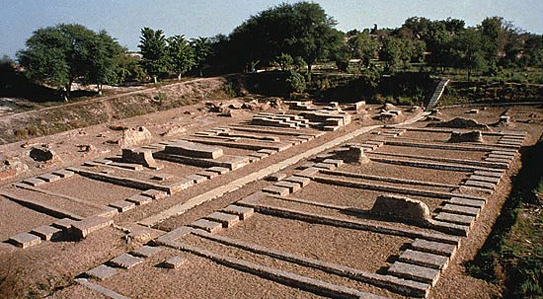
By 2023 BCE, the winds carried the radioactive cloud to Sumer, as described in the Lamentaions dictated by a Nibiruan as people died of (perfectly described) radiation sickness; animals perished; the water was poisoned; the soil became barren. Sumer and its great civilization lay prostrate. Its legacy passed to Abraham's seed as he begot—at age 100—a legitimate heir: Isaac.
The God of Abraham
In many ways, the God of Abraham was different from the "gods" who preceded him, the Nibiruans who had tinkered so fatefully with humankind. For one thing, he was invisible: The Nibiruans, at least at first, had worked face-to-face and side-by-side with their human servants. Yahweh, as he called himself when Moses asked, was never to be seen (and in fact, Moses was forbidden, on pain of death, to even sneak a peek). For another thing, the Nibiruans had never been shy about posing for statues and other illustrations. Yahweh refused to allow any images of himself. Also, alone among all the gods, Yahweh was not married and was not even involved in any other the dramatic love affairs that so illustrated the "morals" (or lack thereof) of the Nibiruans.
For these reasons, Sitchin proposed that Yahweh was not a Nibiruan…that, as the Nibiruans were "gods" to us, Yahweh was God to the Nibiruans, and he had gotten tired of the way the Nibiruans were treating us, and had decided to take over. However, Sitchin was devoutly religious; my personal opinion is that Yahweh was simply another alien from some totally different planet, here specifically to destroy them, and then leave.
Certainly, the Old Testament tells of Yahweh's people (who were supposed to put Yahweh ahead of the other gods, an odd thing to demand if there were, in fact, no other gods) attacking the various remnants of Nibiruan-centered religion, until at last none remained.
And then, Yahweh seemed to leave us alone, though his followers continued to worship him and still do. (And some Pacific islanders still worship the cargo planes that arrived in the Second World War, praying for their return.)
Where Did They Go?
If the Nibiruans spent so much time manipulating the affairs of humans, literally half a million years…where did they go? Why haven't we heard from them since the time Yahweh played an active part in our development?
I see four possibilities.
They destroyed themselves. Certainly they had the power—nuclear bombs and other weapons of mass destruction—and they had the bad attitudes to use them. The Nibiruans had science and technology, but little self-restraint, a combination that our own recent close calls with nuclear weapons suggests could be deadly, indeed.
Yahweh destroyed them on their home world, as he managed to wipe them out on ours.
They decided to leave us alone. Perhaps they solved their ecological crisis and no longer needed Earth's gold. Perhaps Yahweh scared them away. Perhaps they developed a conscience in spite of themselves.
They are still here. Depending how human they really look, they might be "immortals" living among us, the "secret government," or even the aliens who abduct some of us now for—what else?—genetic experimentation.
While the question of where they went is certainly of importance—especially if they are still here—another urgent issue is: What part of us is Earth, and what part Nibiruan? What parts were built into us for the Nibiruans' benefit, and not ours?
These questions will be addressed in the next essay in this series.
Bibliography
Books in the Earth's Chronicles series: (All Avon Books)
Companion Book: Genesis Revisited





